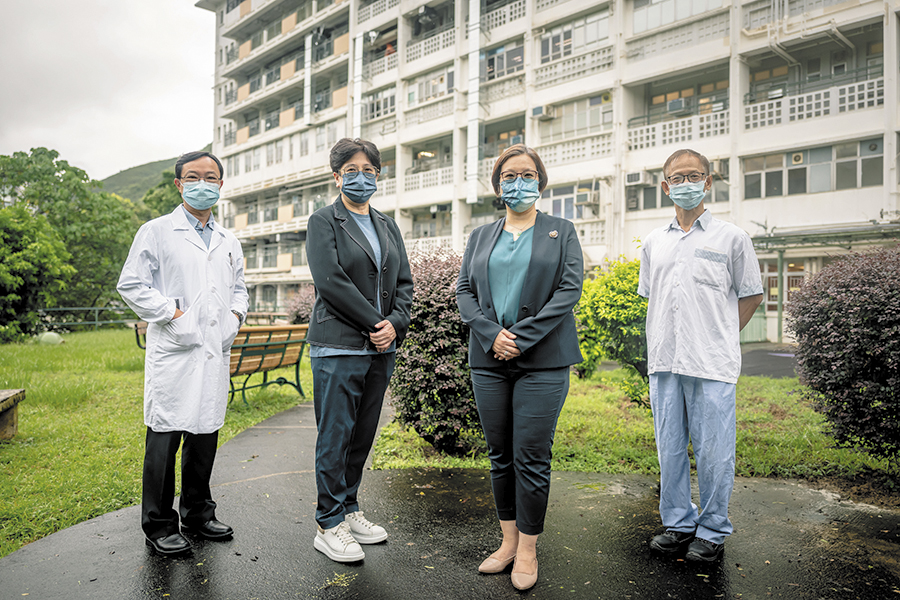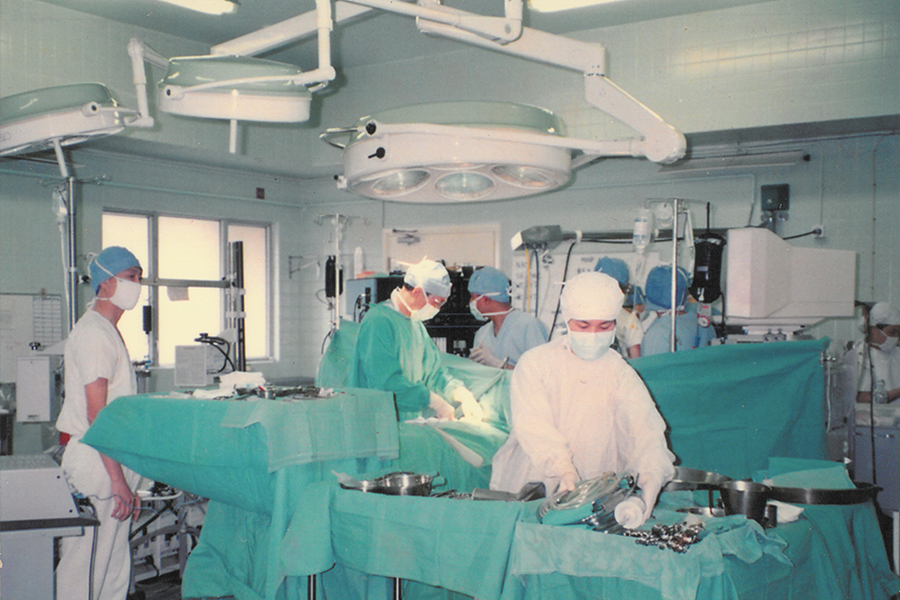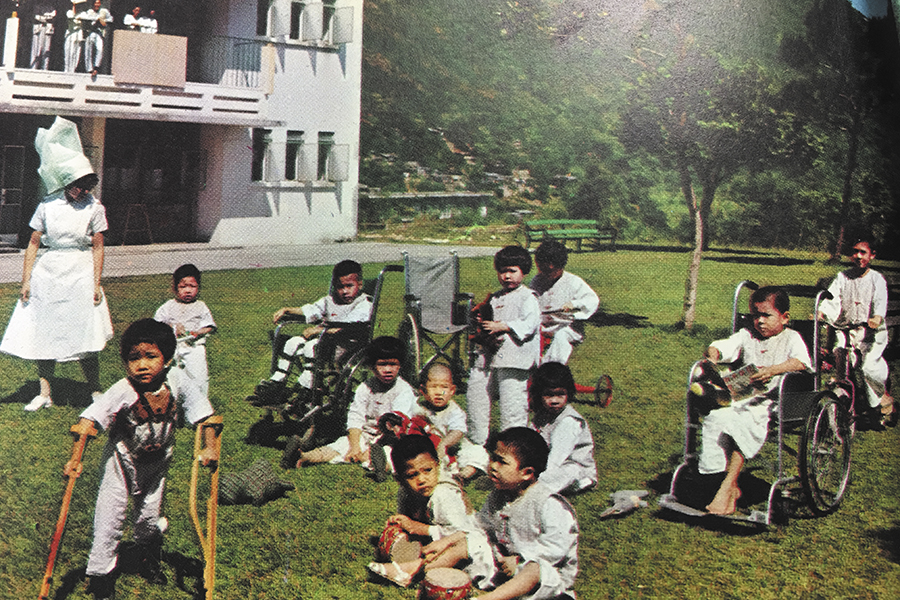
A pioneering ‘boutique hospital’ cures tuberculosis and invents heart-lung transplant
 Grantham Hospital (GH) stands on a hillside in Wong Chuk Hang in a tranquil environment with greeneries. The hospital has in fact set various milestones throughout Hong Kong’s medical history. It has accompanied Hong Kong people in fighting tuberculosis (TB), which once raged the communities. It was also the pioneer for heartlung transplants. All these achievements could only be obtained by the wholehearted cooperation and the ‘can-do’ spirit among all members of the hospital. Several veterans look back at its 65-year history and describe it as a ‘boutique hospital’ — despite its small size, the aspiration to provide excellent services to patients is everlasting.
Grantham Hospital (GH) stands on a hillside in Wong Chuk Hang in a tranquil environment with greeneries. The hospital has in fact set various milestones throughout Hong Kong’s medical history. It has accompanied Hong Kong people in fighting tuberculosis (TB), which once raged the communities. It was also the pioneer for heartlung transplants. All these achievements could only be obtained by the wholehearted cooperation and the ‘can-do’ spirit among all members of the hospital. Several veterans look back at its 65-year history and describe it as a ‘boutique hospital’ — despite its small size, the aspiration to provide excellent services to patients is everlasting.
In the 1950s, there was a flood of Mainlanders to Hong Kong. Most of them were living in crowded environments, which made TB easily transmitted. Hong Kong Anti-Tuberculosis Association (now known as Hong Kong Tuberculosis, Chest and Heart Diseases Association) built a hospital in Wong Chuk Hang in 1957. The hospital was named after Sir Alexander Grantham, the then Governor of Hong Kong, as ‘Grantham Hospital’ and it was the largest hospital specialising in pulmonary diseases that time.
Major training ground with open-mindedness for medical students
Later, when TB was significantly under control, the hospital gradually transformed into a specialist hospital focusing on heart-lung diseases in the 80s, equipped with cardiac catheterisation laboratories, operation theatres and laboratories. Dr Katherine Fan, Chief of Service of Cardiac Medicine, describes cardiothoracic surgery, adult cardiology and paediatric cardiology as the ‘iron triangle’ of the hospital back then, and were among the most important departments of nuturing medical students.“It reached its climax on every Friday. Giants of cardiac service, chest service and cardiothoracic surgery gathered in the meeting room while colleagues including those from other hospitals brought along the medical records of complex cases and X-ray films for discussion. The meetings were very engaging!” says Dr Fan. The management team was forward-thinking and strongly supported doctors being trained abroad. They dared to think about and perform new procedures. As a result, the hospital set numerous milestones in medical history, including transplant services.
A number of first of its kind heart and lung transplants were performed in GH in the 90s, which caused a sensation in the society. Dr Chau Chi-hung, Chief of Service of Tuberculosis and Chest Medicine participated in the treatment for the first single lung transplant patient in 1995. “The patient was a young lady. Since her illness had seriously affected her daily life and had brought her to a sort of dead-end situation, she agreed to receive the transplant after careful consideration. It was a courageous decision. We felt nervous too, so we visited the ward two to three times a day to check her vital signs and make sure that nothing would go wrong.”

Strengthening cancer treatment and day services after redevelopment
The hospital has continued to transform itself in the past 65 years, and till now, it provides six clinical services including geriatrics, palliative care, ophthalmology and rheumatology & immunology services, on top of the tuberculosis & chest and cardiac services. Dr Christina Maw, Hospital Chief Executive (HCE), states that the development of each specialty is responding to the overall medical needs, such as ageing population. The hospital is currently undergoing the first phase of redevelopment work, and will introduce more high-end equipment. “Even though we are not an acute hospital, we have been handling a variety of complex diseases. The hospital will further enhance its professional development after the redevelopment, including cancer treatment and day services in order to provide better patient services.”